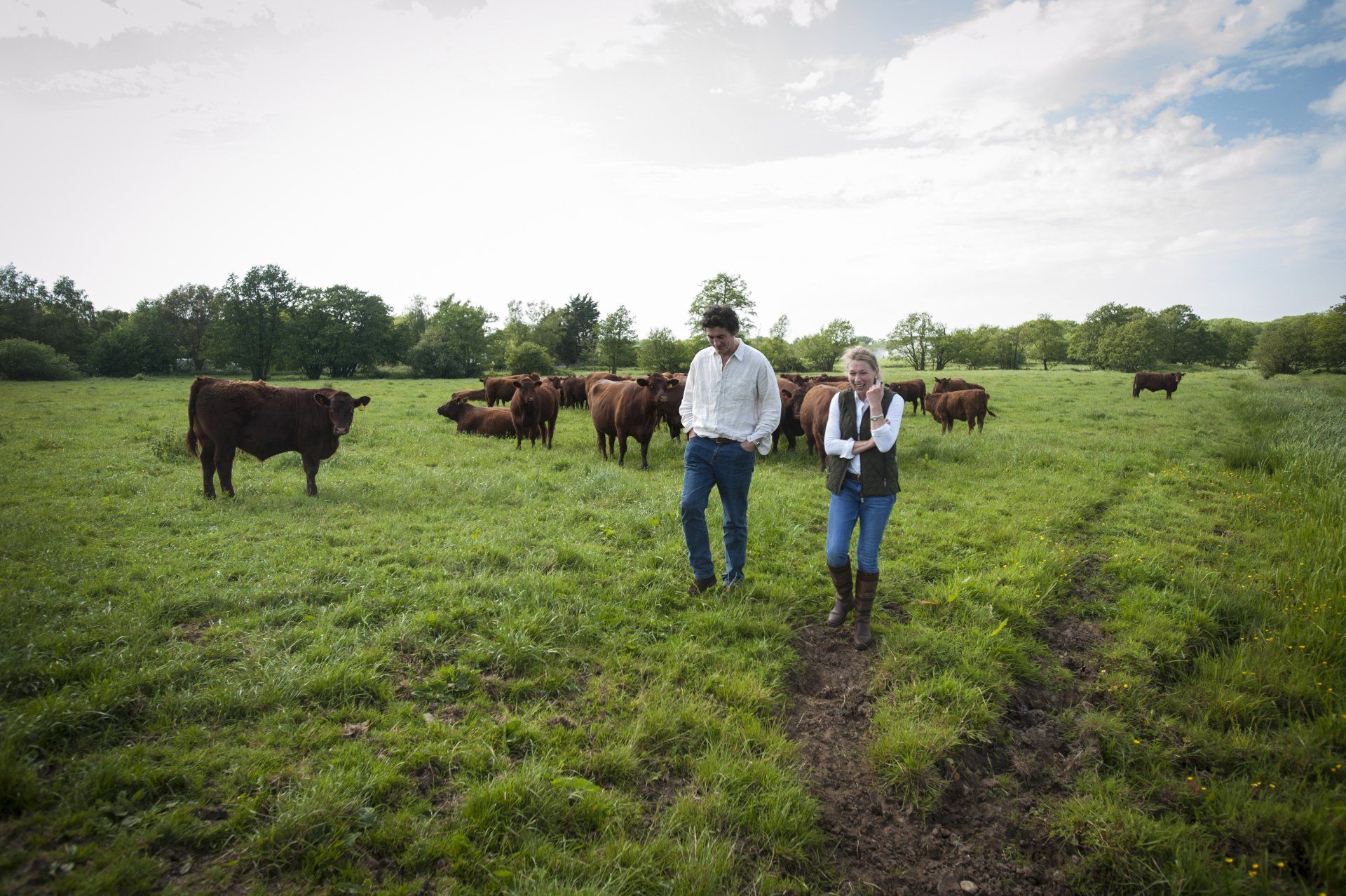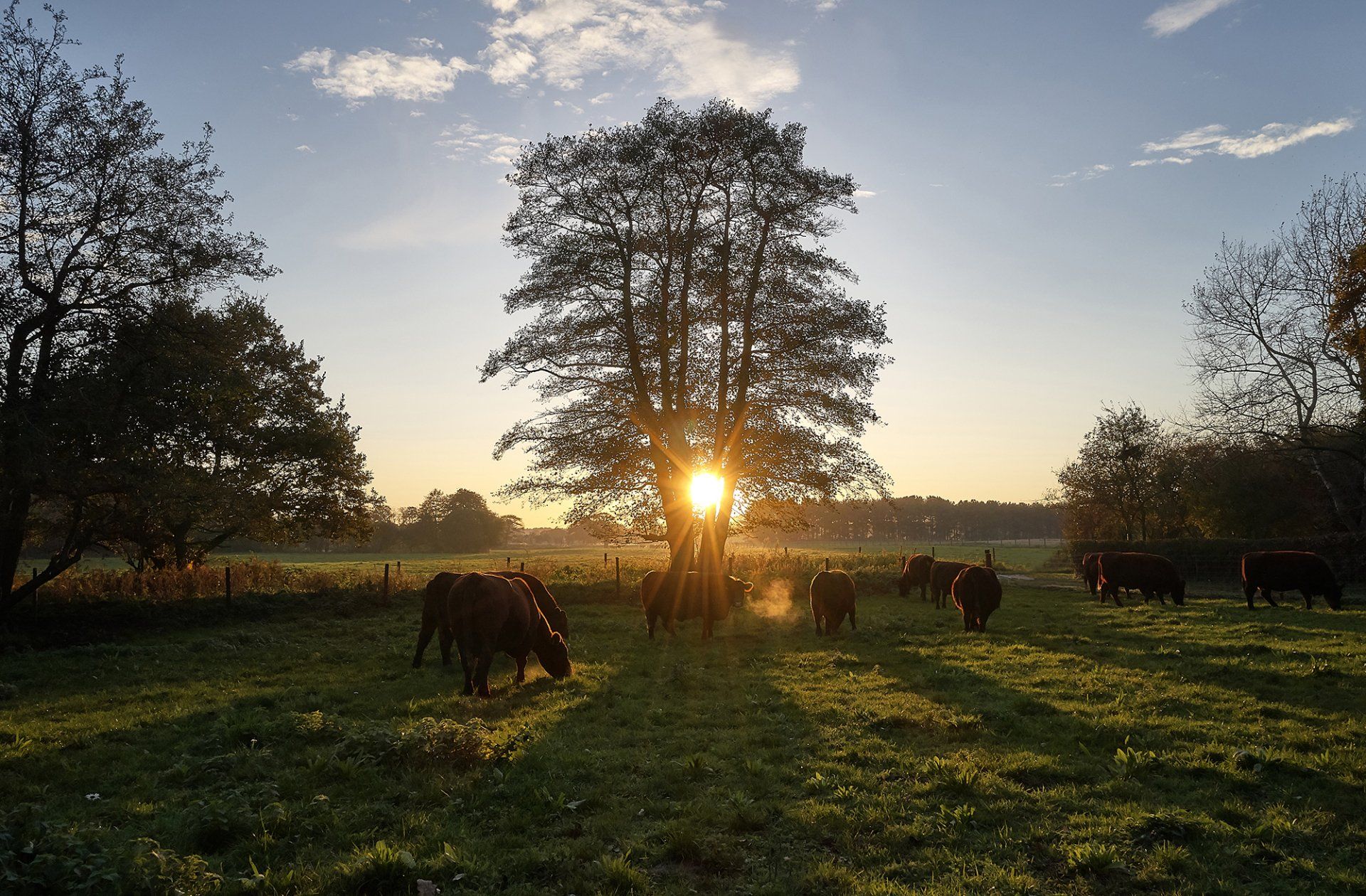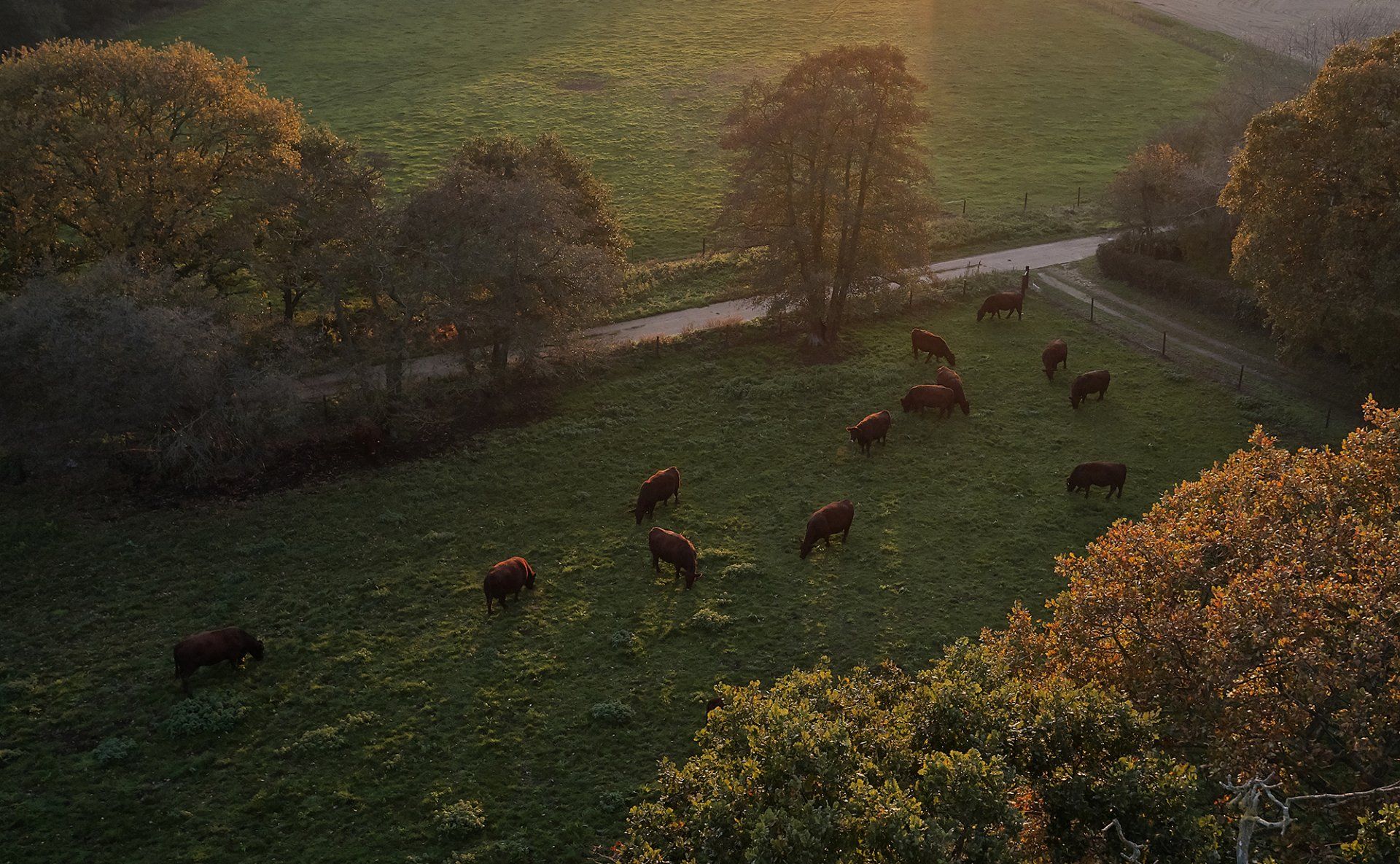Sustainable Farming - Salter & King
Gerard King from Salter and King's Butchers in Aldeburgh in Suffolk is a passionate advocate of food sustainability.
He regularly visits the farms from which he sources his meat, and maintains a close relationship with the farmer, to check that environmental standards remain high.
All of his animals are grass-fed and slaughtered later than the average cow. Some of the older cows he sells exclusively online can be as old as 19 years old, as he explains here to WildEast's Laura Hampton.
We are overlooking the Alde River at Yarn Hill Herd Farm where I get most of my beef from. I’m standing in front of a barn with bullocks in them, that I have to choose for the shop. We also have a couple of cows here, which is something that the farmer here Richard Mann and I have, over the years really, specialised, in which is our old cow beef.
I am particularly interested to hear about how you work with local farmers in terms of sustainability and how you approach concepts like animal welfare. Let’s start with your old cows, why did you make the decision to start butchering older animals as well as younger ones.
It's finding things that the customer is going to want and enjoy. Often cattle are slaughtered between 12 and 24 months here in the UK, whereas the old cows we get from Richard are between 6 years and the oldest one was around 19 years old. We hang them for a little bit longer and it’s just a wonderful product. You know what they have spent their whole lives out on the grass here on the banks of the River Alde, in water meadows that can’t be used for anything else and that support a huge array of flora and fauna. It's fantastic grazing here. I spoke to Richard many years ago about it after I’d had it in Spain and was it something I thought we could do with some of his older cows He said that he could take some of the older ones, and look after them, fatten them up and we could give it a go. It's worked out really well.

Talk me through the taste, how different is an older cow to one that might be slaughtered much younger in life.
It's still beef, but what it's about is the texture. You are seeing something that has an extra layer of flavour and texture. With the steaks, the fat is richer which is a really deep yellow. When you cook it and caramelise it on a BBQ, it's something else. It's absolutely gorgeous.
When it comes to flavour, how different in taste are these cows that have spent their lives outside, to a pack of mince that you might find on a supermarket shelf?
It’s entirely a different producer altogether. You can’t really compare. These cattle have spent their lives on the pasture. Farming in this way, with them eating only local natural ingredients is something I wanted to support. I opened Salter and King to provide my customers with real, sustainable meat. We have a little hashtag on social media called #goodmeatmatters and I believe it's true. The difference is quite simple; these cows have been out on the grass, they’ve been looked after, they have been grazing on a variety of different glasses, the flavour and texture from the meat is over and above what you'd get from a packet of mince from commercially reared, intensively reared cattle which are slaughtered at a young age, and often would never have seen a blade of grass in its life. The flavour and texture, it’s not worth buying.

Looking at the arguments around cheap meat, there will always be a cost associated with it, and often it’s an environmental cost. How important is the environment to you at Salter and King?
Dealing with the farmers that we do deal with, the welfare of the animals is so important but also how they are maintaining the countryside and making it sustainable for the next generation, but it’s also for the customers to understand that it is difficult at the moment, we are moving into a cost of living crisis and so people are looking for cheaper alternatives, but I would rather that people didn’t eat meat very often, and pay a little more for it when they do have it. Have it as a real treat. When going to a butcher, make sure that you can trust, and make sure the animal has come from a farm that treats both the animal well and the environment well too.

When you have a plate of food in front of you, you have to think about where it’s come from and the process it’s gone through to get there. Has it come from a place where the environment and biodiversity is a contributing factor? We need to increase biodiversity across East Anglia by 20% and for that to happen, our farmers and food producers need to be supported by the consumer to make more space for nature. Importantly this can happen in a working landscape. It doesn’t have to come at the expense of growing food. It can happen in parallel. What are your thoughts on growing both food and nature? We have four beautiful beasts in front of us, you were just discussing with the farmer which ones you wanted, talk me through your thought process regarding which ones you chose and why.
We’ve got the old cows in there, so they are coming to be anyhow. They are going into slaughter next week ready for the Aldeburgh Food & Drink Festival in the end of September. I also had to choose between the two bullocks which one I’d like in the shop. They are both lovely looking bullocks, and I’ve gone for one which is probably not the most economic for me and my margins in the butchers' shop but I went for the one which is a little bit fattier and I think it will hand better and eat a little better than the other one.
So I’m looking for a nice shape to the back not too much fat, and I look at the brisket between the two front legs to see how rounded and fat that is and I look at either side of the tale the the two lumps of fat there, I look at the straightness of the back and I just visualise what the sirloins are going to look like which is probably not what most people do when they are looking at a cow.

WildEast Blog

Powered by LocaliQ
Follow Us
SIGN UP FOR NEWS & UPDATES
Newsletter Sign Up
Thank you for signing up to our newsletter.
Please try again later.
Privacy / Terms & Conditions / Sitemap
